The Building Energy Act came into force on November 1, 2020. It basically regulates how the house is built or technically equipped and sets some new specific values, for example in relation to the basic energy requirements of the house. What builders and owners should consider.
Up until now there have been two laws in Germany on saving energy in buildings.
On the one hand the Energy Saving Ordinance (EnEV) and on the other hand the Renewable Energies Heat Act (EEWärmeG). The New Building Energy Act (GEG) replaces both and also brings with it some changes and new regulations. „However, the current level of energy requirements for new buildings and renovations will not be tightened,“ according to the website of the Federal Ministry of the Interior, Building and Society (BMI) and „Increases in construction and housing costs“. avoided.”
– The most important decisions of the GEG:
Even if the Building Energy Act is new, most of the content is already known from the two previous acts. Anyone who builds a new house must comply with certain limit values, for example in relation to the initial energy requirement, the thermal insulation capacity of a component, the type of heating and insulation, etc.
The decisions of the law are based on used or old buildings and on modern buildings
– For which buildings does the GEG not apply?
If the usable area of the building is 50 square meters (m2) or less, it does not fall under the Heat Act. The usable area is calculated differently for residential and non-residential buildings.
NEW BUILDINGS:

– Requirements for new buildings:
According to this, a zero-energy building is a house that “ has very good overall energy efficiency and whose energy requirements are very low and, as far as possible, should be covered to a very large extent by energy from renewable sources ”.
The GEG assumes the existence of a reference or base building against which every new building has to be measured. For example, the thermal coefficients and the total energy permeability of all relevant components are given for this reference building. Finally, the insulating ability of the component. This reference building is described in the law itself, but some of the specifications of this reference building, as well as its components, are difficult for ordinary people to see, and here it is necessary to consult the engineers specialized in this, such as the DIN standards. For this it is necessary to consult engineers, housing, energy offices and buildings to see if the building is in compliance with the legislation.
1- Not only the building structure needs to be insulated, but also the heat and hot water distribution pipes need to be insulated.
2- The new building may only cover a certain annual primary energy requirement. This is the energy used for heating or to run electrical systems. Here, too, the reference building serves as a comparison.
In addition, at least part of the energy requirement must be covered by renewable energies. These include the following types of renewable energy that can be used in the building:
- Thermal solar energy
- PV
- heat pumps
- biomass
- A combination of warmth and power
- central heating
– What does the GEG describe for new buildings?
Like the Energy Saving Ordinance, the Building Energy Ordinance also uses the term reference building to evaluate energy-related measures. All new buildings must be measured against this. For the most important components of the reference building.
Important vital variables such as heat transfer coefficient or total energy permeability were determined to be constant.
The heat transfer coefficient (also called U-value) is a measure of the heat transfer coefficient of a component.
– The total energy transmittance (also known as the g-value) indicates the proportion of energy that enters the room through the glazing and heats up the room there. In addition to the structural shell, some regulations also apply to the insulation, for example heating or hot water pipes.
Example:
As a rule, the so-called insulation should be 100%. This means that all heated pipes must be covered with insulation no smaller than the inside diameter of the pipe. This applies at least when the insulating material has a thermal conductivity of λ = 0.035 W/(m • K). If the thermal conductivity of the insulating material used is higher, the insulation thickness should be adjusted accordingly. However, GEG also describes exceptions that lead to a lower or higher insulation thickness.
– The annual primary energy requirement is only 75 percent of the reference or main building:
The central element is that new buildings may only have a certain initial annual energy requirement. This is the energy that you must use directly for heating, air conditioning or associated electrical systems. Since new buildings are designed as low-energy houses, they may have a maximum of 75 percent of the energy requirements of the reference building.
The energy requirement is calculated from the energy sources used and then multiplied by a specific „Prime Power Factor“. This factor is an indicator of the total amount of energy consumed from the source to the house. In order to make it easier to compare different energy sources, not only the energy consumption is taken into account in the calculation, but also the energy requirements for generation, conversion and distribution.
for example :
When heating with electricity, the base power factor is 1.8. This means: In order to get 1 kWh of thermal energy into the house, a total of 1.8 kWh must be generated in the power plant. The remaining 0.8 kWh are conversion and transmission losses.
More sustainable energy sources have an advantage when assessing the primary energy requirement, since significantly lower values were determined when determining the factors renewable energies and wood than, for example, oil and natural gas. This also has to do with the fact that, in addition to saving efficiency, climate compatibility is also taken into account.
for example:
The base power factor of solar energy is 0.0 because the energy is generated where it is consumed and there are no transmission and distribution losses. The use of solar energy can significantly reduce the primary energy requirement of a house.

– GEG for new buildings: Renewable energies are becoming highly flexible:
In the Building Energy Act there is an obligation to use renewable energies. New buildings must cover part of their heating and cooling needs with renewable energy. Most of the requirements were taken from the Renewable Energies Heat Act. The exact proportions vary by energy.
At least 15 percent renewable energy
The GEG also states that at least 15 percent of a building’s heating and cooling energy needs must be covered by renewable energies. Depending on the power source chosen, the ratio may be higher:
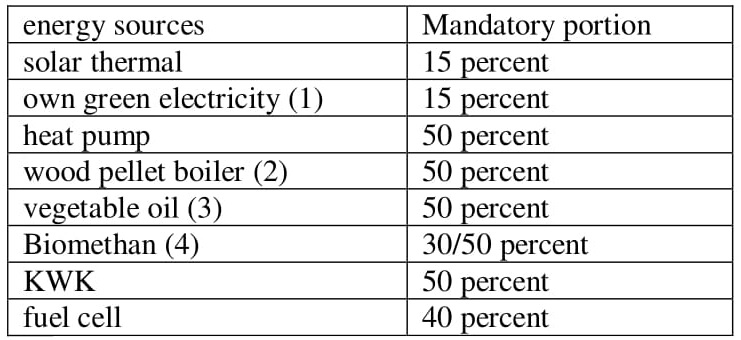
- 1: Green electricity that is generated close to the building and is mainly consumed by the building itself; with own photovoltaic system fulfilled if: kWp PV ≥ usable building area x 0.03 / number of heated floors
- 2: solid biomass
- 3: liquid biomass
- 4: gaseous biomass, 30 percent: NPP plant, 50 percent: condensing boiler
At GEG there is no commitment to solar energy:
Although the Building Energy Act does not currently prescribe the use of solar energy for residential buildings, similar regulations already exist in some federal states. Since 2022, all new buildings in Baden-Württemberg – whether commercial or private – must be equipped with a photovoltaic system and many federal states are ahead of the curve. The goal is to generate 80% of electricity from renewable sources by 2030.
– U-values & GEG:
– Changes to the GEG compared to the EnEV:
In the Building Energy Ordinance, the same requirements for energy consumption and thermal insulation apply to new buildings and renovations as in the most recent EnEV. For example, the requirements for U-values of the EnEV 2016 for existing buildings were approved unchanged.
This means that the thickness of the insulation material remains the same as for the insulation of the ceiling.
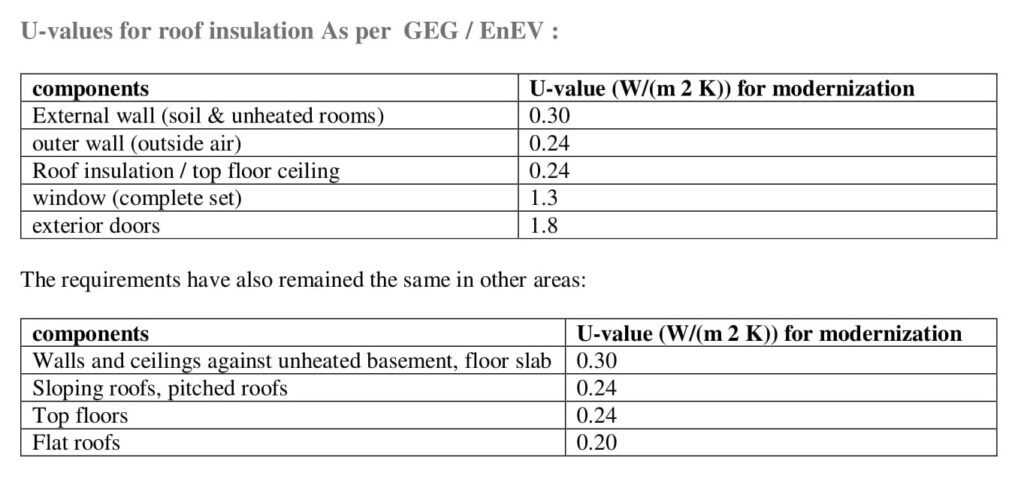
– At the time of this report, the federal government had not introduced any stricter requirements to avoid rising construction and housing costs.
– From 2025, the Efficiency House 40 (EH 40) will be defined as the new statutory building standard. In a modified GEG.
Natural gas heating should not be able to meet the efficiency house standard.
– Due to the current political situation, there are many calls for change. At the end of April 2020, the first draft of the amendment to the Building Energy Act (GEG) was published. This includes, among other things, the amendment of the new building standard from EH 75 to EH 55. This means: The permitted initial energy requirement for a building to be erected has increased from 75 percent of the initial energy requirement for the reference structure to 55 percent.
– No stress! the requirements for the U-VALUE remain unchanged .. !
For all builders who are used to dealing with EnEV, the requirements for the building shell with GEG have not been increased – EnEV values are adopted unchanged.
– External walls: 0.24 W/(m2 K)
-Ceiling areas: 0.24 W/(m2 K)
-Walls vs. floor: 0.30 W/(m2 K)
– Storey ceilings adjacent to the unheated roof area are to be insulated in such a way that they do not exceed a U-value of 0.24 W/(m 2 K). Ceiling walls can also be insulated instead of the ceiling. A change of ownership is a compelling reason for the conversion of apartment buildings.
-The previously uninsulated heat distribution and hot water pipes must be insulated.
-The requirements for building waterproofing remain unchanged.
-The maximum final energy demand remains at 75% of the reference building. In the case of renovations, it must not exceed 1.4 times the final energy requirement of the reference building.
The deadline for entries is December 31, 2023. Authorities can allow verification based on greenhouse gas emissions and final energy demand. New buildings built after this date, i.e. in 2024, are subject to high fines for proven violations.
New for residential buildings is a model construction method – an alternative verification method. This allows owners to demonstrate compliance with the GEG requirements based on the minimum qualities of the measures without energy calculations.
Caution: If external components such as walls are renewed or renovated (>10% of the area), these must not exceed the maximum U-values specified after the work has been completed. This may require subsequent insulation. This could get expensive!
In the future, buyers of detached and family houses will have to “have an informative discussion about the energy certificate with a person authorized to issue energy certificates according to Section 88”. However, only “if such a conversation is offered free of charge as an individual service”. Free advice is also mandatory for extensive renovations according to GEG specifications. The fee-free regulation does not include any particular obligation on the part of the owner to seek free advice. Rather, it is sufficient if he inquires from publicly accessible sources whether there are free advisory services.
Attention:
Implementing companies must state their energy customers when submitting their bid!
The energy certificate is only valid for 10 years, after which it must be renewed when buying a house or building and it is advisable to consult energy and construction experts.
– OTHER INNOVATIONS:
The numerous other innovations – such as the mandatory use of renewable energies in new buildings, the ban on new oil and coal heating systems or the mentioning of CO 2 emissions in the energy certificate – are listed on the website of the Federal Ministry of the Interior , Building and Community.
The entire legal text of the GEG can be viewed and downloaded here.
– GEG offers convenience for photovoltaics, biomethane and fuel cells
Compared to the outdated Energy Saving Act, the Building Energy Act creates additional opportunities to implement the obligation to use renewable energies:
1- The requirements are now also met if 15 percent of the heating and cooling requirement comes from renewable electricity generated close to the building, which is mainly consumed by the building itself, for example by small wind turbines. The most common case is probably the photovoltaic system. To calculate the minimum peak output of a photovoltaic system in kilowatts (kWp), there is a separate equation in §36 of the GEG: the usable building area multiplied by 0.03 divided by the number of heated or cooled floors according to DIN V 18599- 1: 2018- 09 You can see whether the photovoltaic cells on your roof are worthwhile with a solar roof check.
2- It is no longer necessary to use gaseous biomass – i.e. biomethane – in the CHP heating system. A condensing boiler is now sufficient if biomethane covers 50 percent of the heating and cooling requirements.
To learn how to switch to green gas, click here.
3- For fuel cell heating systems, the rate has been reduced to 40 percent compared to other CHP systems.
4- Other substitution measures that are equivalent to the renewable energy obligation are climate-friendly district heating or thick insulation. With thicker insulation, the heat transfer loss should be 15 percent lower than with the usual GEG insulation standard.
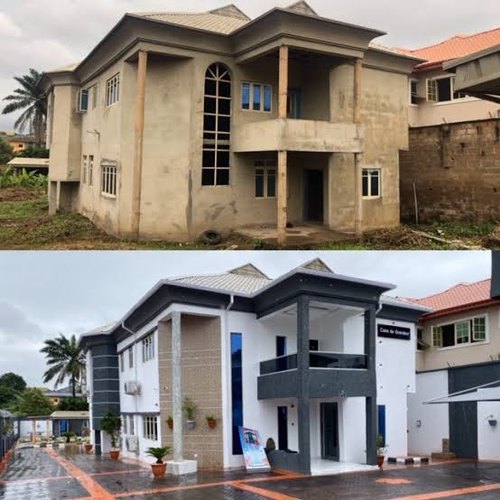
GEG FOR OLD OR USED BUILDINGS:
– What U-values does the new GEG have for old or used buildings?
Ever since the European Union announced the approval of Russia’s oil embargo on Tuesday, May 31, speculation has begun about the extent of the serious development for Russia and the likely size of its losses.
Bloomberg previously estimated Russia’s loss to the European oil embargo at $22 billion, but the head of Russia’s Energy Development Center, Kirill Melnikov, disagreed.
According to Russian news agency TASS, Melnikov stated that Russian oil companies could lose between $5 billion and $10 billion due to the European Union’s decision to impose a partial embargo on Russian oil supplies.
Melnikov believes Bloomberg’s estimates are wrong because they didn’t take into account the rise in Brent crude prices, as observed by the specialist energy platform.
– Simply do not tighten the requirements for the U-value:
But !! :
Attic roofs adjacent to the unheated roof area must be insulated in such a way that they do not exceed a U-value of 0.24 W/(m2·K). The ceiling can also be insulated instead of the ceiling walls.
On November 1, 2020 the time has come: The new Building Energy Act, GEG for short, will come into force as the legal basis for the requirements for buildings and their heating and cooling supply with renewable energies. At the same time, the Energy Saving Ordinance (EnEV) expires.
The GEG fully implements European specifications for the overall energy efficiency of buildings in the Uniform Energy Saving Act. At the same time, many unnecessary laws and regulations will be introduced, which will also expire on November 1st. Planners, processors and builders can say goodbye to the Renewable Energies Heat Act (EEWärmeG), Energy Saving Act (EEG) and Energy Saving Act (EnEV), which apply to building insulation.
– Requirements for the rehabilitation and modernization of the voluntary port:
All other renovation and modernization work in the house is usually voluntary, ie it must be carried out because there is a porting order or repair of the building, and at the same time it is not required under the new law
When you start retooling or reinventing, the GEG gives you the minimum standards you need to achieve. Old, leaking windows, for example, do not have to be replaced under the new Building Energy Act. Thermal insulation of external walls makes sense, but is not absolutely necessary. Due to cracks in the wall or mold in the wooden windows, however, it may be that the corresponding insulation values according to the new law have to be achieved when replacing the old windows or renovating the facade. The same applies if you are renovating more than ten percent of the facade area (i.e. if the repair of the building’s outer facades accounts for more than 10% of the wall or outer facade area). If the facade has only been touched up in individual places or has just been repainted, you do not have to meet the requirements.
The insulation limit values also do not apply to smaller jobs in the house, such as replacing floor coverings.
GEG for old buildings:
– Boiler replacement and retrofit instructions:
From January 1, 2026: The installation of new oil or coal heating systems will only be prohibited if the energy requirements for heating and cooling are partially covered by renewable energies. Therefore, mixed geysers are called oil and coal based. The exact share of renewable energy varies depending on the energy source, for example 15 percent solar thermal, an oil or coal heater or a so-called wooden pallet must be replaced by stocks of renewable energy such as a solar heater when replacing an oil or coal heater with a similar one they fuel conditions from 2026 and are the same for a new building. That is, the building owner cannot install an entirely oil or coal fired system.
– Obligation to replace old oil and gas heating systems:
According to § 72 GEG, there is still an obligation to replace all oil heating systems and gas heating systems that are more than 30 years old. As before, the main exceptions are condensing boilers and low-temperature boilers without a condensing boiler. In the case of single-family houses and semi-detached houses, the obligation to pay compensation according to § 73 only occurs after a change of ownership. That means you bought an old house.
– Insulation of hot water pipes:
Heating and hot water pipes going through unheated spaces need to be insulated, which means you need to insulate the pipes when they go through garages, garbage rooms, etc.
– Insulation of the upper floor or ceiling:
Since 2015, the upper floors that lead to an unheated attic must have a „minimum thermal insulation“. Usually this is a thermal insulation of 4 cm. For example, the rafter construction and the spaces between them are filled with insulating mats or loose insulating materials (cellulose, rock wool, glass wool, etc.).
The obligation to insulate applies not only to converted attics, but also to converted or dry attics. Alternatively, the roof can also be insulated.
This is because warm air in a building or home is usually moved to a higher level because it is lighter than normal air

GEG FOR OLD AND NEW BUILDINGS:
– Energy certifications and obligation to provide advice
An energy certificate is an overview for builders, buyers and tenants of the expected energy consumption of a building. As a result of the new law, energy requirement certificates must now also show the carbon dioxide emissions from the final energy requirement for heating systems and other systems or devices that emit carbon dioxide. In the case of sale or rental, the owner must make the necessary arrangements for issuing an energy performance certificate. An energy certificate must be presented to potential buyers or tenants at the latest during the inspection. In the case of new buildings or renovations, an energy certificate with a building re-evaluation must also be issued.
Compulsory energy advice: if it’s free. That’s fine, when buying a single or family home, and for owners when renovating too. However, there is no obligation unless the call is free. Consultation should take place with a person authorized to issue energy performance certificates. You can also find energy consultants in your area in our database.
Note: The energy certificate is valid for 10 years and must then be renewed.
– Evidence of GEG: final declaration of the conditions for new construction and renovation:
The Building Energy Act obliges building owners for the first time to provide effective proof of compliance with the GEG requirements. This applies in principle to new buildings, but also to modernizations if an active re-evaluation of the building is carried out. To do this, they must submit a declaration of conformity to the competent authority after the work has been completed.
According to the EnEV 2016, builders had to issue a so-called entrepreneurial declaration, but only keep it and show it to the authorities on request. The GEG also points out that federal states can set up general regulations on the content of a declaration of compliance. Therefore, the form of the declaration of conformity will differ from state to state.
The Federal Institute for Building , Urban and Spatial Development Research (BBSR) offers an energy saving information portal with an overview of the implementation of the GEG in the federal states.
– What does the Energy Building Act do for climate protection?
Building insulation and renewable energy for heating and cooling make a significant contribution to climate protection by improving energy control and management. The Energy Building Act brings small improvements such as energy requirement certificates, which must now also contain information on carbon dioxide emissions. This makes it easier for tenants and buyers to see whether the building produces too much or too little greenhouse gases when heating, cooling and ventilating.

FINES :
If, two years after buying a used home, you do not make the changes required by the regulations of the new law, or if the newly built home does not meet these new requirements, the federal states can impose fines of up to 50,000 euros for violations of the GEG.
The two-year period starts from all new and pre-owned buildings purchased after 11/01/2020, whereby you are granted a period of two years if, for example, you bought a pre-owned house on 06/01/2022, then on June 2024 the municipality will do that Expect to inspect buildings after submitting all required forms submitted by yourself and not by the company that built the project or renovated the building.
WHAT NOW. FUTURE PROSPECTS: THE NEXT FEW YEARS AT GEG:
In the course of its lifetime, the EnEV has undergone many updates and revisions, some of which were extensive. This is also to be expected at GEG. Quite simply because important requirements and skills may change in the coming years. However, it has already been decided to implement some possible changes in the law itself:
– In 2023 it must be clarified in what form and to what extent industrially produced energy sources can be used in liquid or gaseous form.
– In 2023 , the law and the requirements contained therein will be revised and adjusted if necessary. Then, for example, stricter limit values can be introduced.
– Until March 1, 2024the state supervisory authorities should be in place and have carried out the first random checks.
– The innovation requirement will be completely abolished by the end of 2025 . Instead, in the course of the assessment in 2023, it will be decided whether other technologies will be included in the law instead.
– From 2026: Apart from a few exceptions, no more oil heating in new buildings.
SOME QUESTIONS AND ANSWERS:
1- Are there new requirements for new builds?
No, the requirements for new buildings have not been tightened.
2-Why was the Energy Saving Ordinance replaced by the Building Energy Act?
The reason for this is a European building efficiency guideline that prescribes a climate-neutral building standard for new buildings by 2050
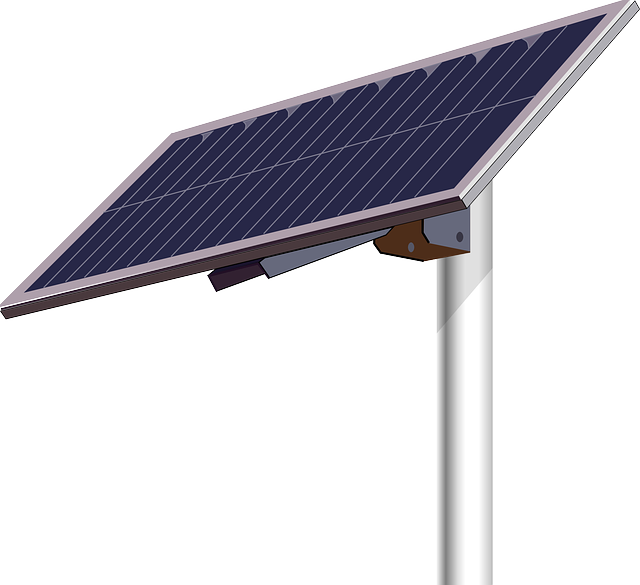
AND WHAT ABOUT ELECTRICITY?
When determining your annual primary energy requirement, your electricity from a photovoltaic system, for example, is taken into account more generously than before. A deductible can significantly improve the energy balance of your home. The prerequisite for this is that you generate electricity yourself, for example on a roof, and consume as much as possible yourself.
For residential buildings, a nominal output of at least 0.02 kW / m² usable area is assumed. So if your home has a usable area of 250 square meters, the output of your solar system should be at least 5 kW. Since many newly installed systems are at least 10 kW, the minimum requirements should not be an issue.
With a pure PV system, you can deduct 150 kWh per kW from the installed nominal power, with a battery storage solar system up to 200 kWh per kW. In total, up to 30 percent of the solar energy (only PV system) can be offset against electricity requirements; In combination with an electricity storage device, the proportion increases to a maximum of 45 percent.
CRITICISM OF THE GEG
From the point of view of climate protection, however, the GEG faces a major problem: As already mentioned, the requirements of the Energy Saving Ordinance (EnEV 2016) are simply relied on. The federal government did not want to increase state subsidies for builders so much that the demands of climate protection for energy efficiency in buildings would be met.
The Deutsche Umwelthilfe (DUH), for example, complains that the GEG requirements are not sufficient to achieve a climate-neutral building stock by 2050. For this it is necessary that the entire building stock after renovation corresponds to the average KfW Efficiency House 55.
The energy requirement of the core only has to be 55 percent of the GEG requirement. According to the DUH, new buildings must at least meet the KfW Efficiency House 40 standard.

WHAT ARE THE COSTS IF I USE THE SYSTEM IN A NEW OR USED HOME?
In order to meet the requirements of the GEG, the costs for the insulation and heating system and, if necessary, for the ventilation system arise with renewable energies, as previously with the EnEV. However, it is important to distinguish between the different elements:
– Costs anyway: If the plaster on the facade collapses, scaffolding still has to be built for the renovation, e.g. Which should then increase the cost.
– Energy-related costs: In addition, there are the energy-related costs for insulating materials and the associated additional costs.
Typical costs for thermal insulation can be found in this table:
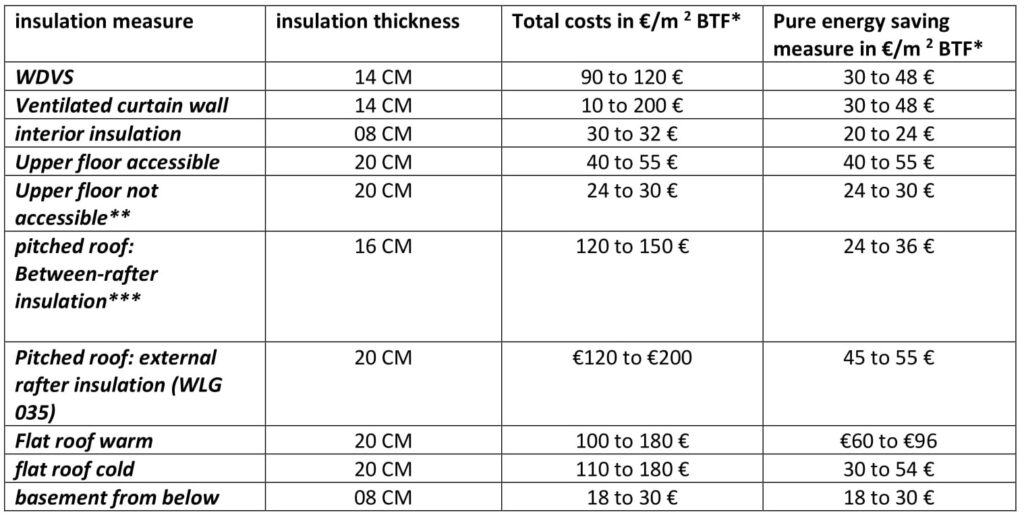
* BTF = component area calculation with WLS 035
** If the ceiling is not walkable, the surface of the insulation must be stabilized accordingly.
***According to EnEV §8 and 9, insulation may only be used at rafter height.
-Solar thermal: costs for hot water and heating :
If the heating is to be supported by solar thermal energy and hot water is to be provided, higher costs are to be expected – around 10,000 euros for an average single-family house, as the two examples show:

IS THERE A SUBSIDY UNDER THE BUILDING ENERGY ACT?
The law has nothing to do with financial support. However, energy-efficient and climate-friendly heating systems are also widely supported by other government regulations.
– KFW: At the beginning of 2020, the federal government increased funding due to environmental trends. As part of the KfW financing, there are higher loan repayment grants of up to 25 percent for new buildings and for old buildings in connection with renovations, the investment was approved with up to 40 percent. However, KfW funding for contractors only occurs if they go beyond the GEG requirements.
– BAFA: Funding There are also programs:
-Heating with renewable heating – for example, the exchange premium for an oil heating system is up to 45 percent of the investment
costs -Improved heating through highly efficient heat pumps and hydraulic balancing
-Efficient heating with CHP. Systems
-Energy advice on individual energy concepts for renovation and new construction

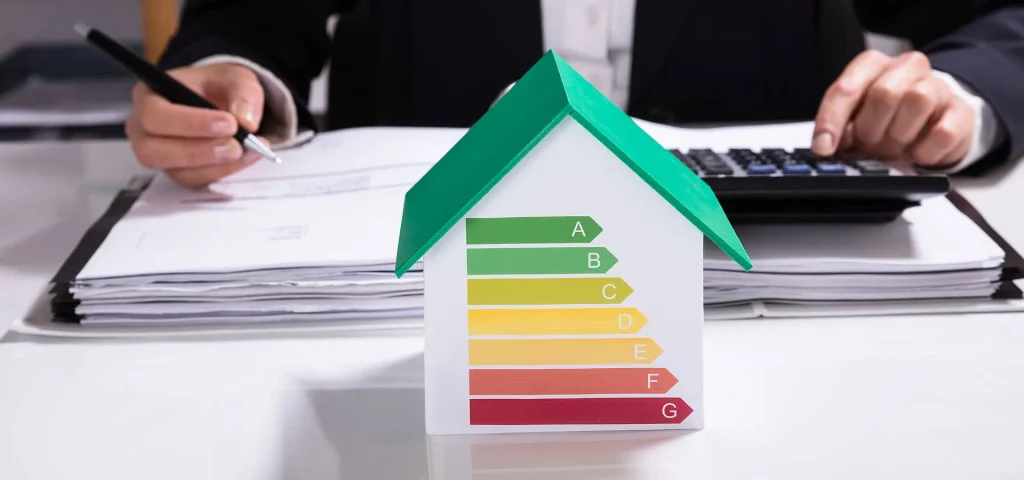
Hello